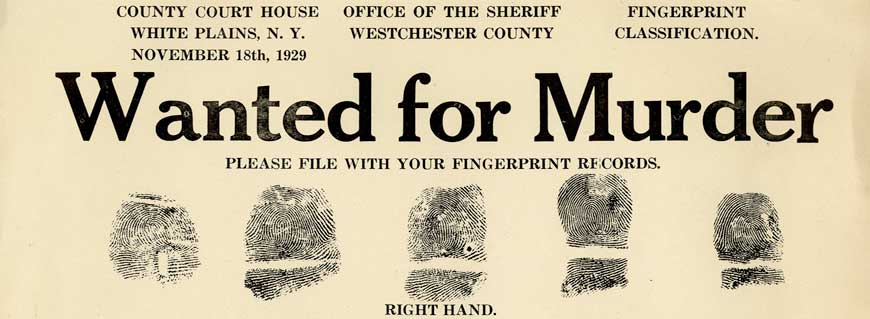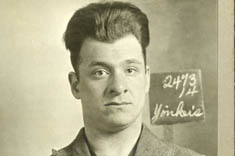The Westchester County Archives does not hold Certificates of Naturalization. For assistance in locating a Certificate of Naturalization, see the National Archives’ website at https://www.archives.gov/research/immigration/naturalization/history-cert-of-naturalization and scroll down to “Researching Certificates of Naturalization.” For an overview of the Westchester County Archives’ holdings for Naturalization records, click here.
The Westchester County Archives can provide “certified” copies of naturalization Petitions held in our collection. To order a certified copy of a naturalization Petition:
- Check the index to Naturalization records. Names are listed alphabetically. You can search by last name or first name.
- Fill and print out the “Individual Record Request” form.
- Include payment by check or money order for $15 payable to the Westchester County Archives for the copy.
- VERY IMPORTANT: Please provide a SECOND check or money order for $5 payable to the WESTCHESTER COUNTY CLERK (not to the Archives) for the certification fee.
- Mail the form and checks or money orders to the address on the order form.
- We will make a copy of the Petition and forward it to the County Clerk’s office with the second check/money order.
- You should receive the certified copy approximately two weeks after the Archives receives your request.
If you do not see the Petition you need in our index:
- Fill and print out a “Custom Research Request” form.
- Include the following information in the Comments section (as much as you know): name of person in record, birth date, birth place, spouse’s name, children’s names, date of arrival in U.S., date of death.
- Include payment by check or money order for $25 payable to the Westchester County Archives for the copy.
- VERY IMPORTANT: Please provide a SECOND check or money order for $5 payable to the WESTCHESTER COUNTY CLERK (not to the Archives) for the certification fee.
- Mail the form and checks or money orders to the address on the order form.
If we find a record, we will make a copy and forward it to the County Clerk’s office with the second check/ money order. You should receive the certified copy approximately two weeks after the Archives receives your request. If we do not find a record, we will issue a Letter of No Record Found on our letterhead stationery. We will have the letter notarized, and then send it to the County Clerk’s office to be certified. You should receive the certified letter approximately two weeks after the Archives receives your request.
Please specify on the Custom Research Request form if you do not require a certified letter.
Also note that many individuals applied for citizenship in New York City, even though they were Westchester County residents. Not finding records in Westchester does not necessarily mean they did not apply for citizenship at all. Naturalization records for New York City are held at the Northeast Regional branch of the National Archives, (212) 401-1620 or 1-800-840-1752.
For information on how to obtain an apostille, see here: https://dos.ny.gov/apostille-or-certificate-authentication
For more information about dual citizenship with Italy, see here: https://www.esteri.it/en/servizi-consolari-e-visti/italiani-all-estero/cittadinanza/

George Latimer, a third generation Westchester native was born Nov. 22, 1953 in Mt. Vernon to the late Stanley and Loretta (Miner) Latimer. After attending Mt. Vernon public schools, George graduated with a B.A. from Fordham University in the Bronx as well as a Master’s Degree in Public Administration from New York University’s Wagner School.
Since completing his education, George by profession is a marketing executive, who has gained first hand business and economic experience over 20 years at major corporate subsidiaries of Nestle, and ITT, with on-site responsibilities for projects with AT&T, IBM and Shearson Lehman. During that time, Latimer had direct involvement with project development in numerous sites nationwide.
A resident of the City of Rye for nearly 30 years, George successfully ran for the Rye City Council, spending the next four years combining his business experiences with his background in public service, eventually leading him onto the Westchester County Board of Legislators, while simultaneously keeping a steady portfolio with Benchmark Management. During the 13 years that George was a member of that chamber, he served as the Minority Leader and then as the first Democratic Chairman of the Board of Legislators in Westchester history.
From 1998 to 2001, while George was the Chairman of the County Board of Legislators, property taxes decreased in three consecutive years by nearly seven percent. Additionally, Latimer oversaw the passage of groundbreaking legislation such as the creation of the Human Rights Commission, Smoke Free Workplace Laws, and the Waste Haulers Laws. George was regarded as bipartisan and transparent during his tenure, appointing Republicans to chair committees, facilitating a fair redistricting plan that involved members of the chamber’s minority party and outside “good government” groups and establishing the first cable TV coverage of Board of Legislators meetings.
Elected in 2004 to the State Assembly, George Latimer has established a solid record of accomplishment, sponsoring legislation and advancing funding for environmental issues (including protection of the Long Island Sound), housing, transportation, healthcare, lower property taxes and a myriad of other issues. In the Assembly, he is the author of over 20 new laws in topics as diverse as establishing provisions to allow Freedom of Information requests (FOIL) to be requested and responded by e-mail, launching a program to increase organ donations, and preventing radio piracy.
He has received public recognition and awards from numerous Westchester and Hudson Valley organizations for his work in these areas, and has been cited with awards from the Sarah Neuman Center, the Washingtonville Housing Alliance, Congregation Anshe Sholom in New Rochelle, the Port Chester/Rye Brook Chamber of Commerce, the Mamaroneck Chamber of Commerce, LMC-TV, Council of Community Services in Port Chester-Rye Town, Helping Hands and the NY State Association of School Psychologists.
George Latimer’s sound business experience, his record of public service and his dedication to the county community have been the driving force behind his effort for the last 25 years in both the public and private sector. In public office as a city councilman, county legislator and assemblyman, George has always fought for what his Westchester residents and neighbors need. He is routinely cited as the most open and accessible of representatives. Latimer was elected to the State Senate, representing the 37th District in November of 2012. The 37th district is comprised of Bedford, Bronxville, Eastchester, Harrison, Larchmont, Mamaroneck, New Rochelle, Port Chester, Rye, Rye Brook, Tuckahoe, White Plains and Yonkers.

When it comes to learning more about the history of Westchester County’s “criminal element,” the Westchester County Archives is a good place to start. As the repository for the historical records of the County’s District Attorney’s office, and the Departments of Correction and Public Safety, there is much at the Archives to learn about those who have broken the law and those who have brought them to justice.
Whether you are a social historian documenting trends in crime or social relations in the early twentieth century, a student looking for an interesting research topic, or a family historian looking for the family black sheep, the “Crime and Punishment” collections held by the Westchester County Archives are a good place to start. With over 200 cubic feet of District Attorney Case Files and 37 Jail Blotter Books, there are many fascinating stories just waiting to be discovered.
District Attorney Case Files
The most extensive records in this group are the District Attorney Case Files, 1892-1949 (bulk 1906-1949) (Series 253). These files provide fascinating insights into the functioning of an active prosecutor’s office during the first half of the twentieth century. Although some case files may be razor-thin and contain only a True Bill (indictment) against the defendant, others burst at the seams with extensive case documentation ranging from witness statements, correspondence concerning the case and the defendant(s), and a wide variety of documentation used as trial evidence or to investigate the crime. Some case files even include photographs of the defendants, or, particularly when a murder is involved, the crime scene itself.
For an overview of the District Attorney Case Files, read “Preserving Law and Order.” (Note: This article first appeared in the Fall 2010 issue of "New York Archives" magazine, a benefit of membership in the Archives Partnership Trust. It is reposted here with permission from the Trust.)
To view a small sample of the types of records found in these case files see our digital collection "District Attorney Case Files: Obscure, Noteworthy and Notorious".
An extremely detailed index for over 10,000 DA Case Files processed by Archives’ staff and volunteers is available in-house at the Archives. This covers all records in the collection up through 1925, and part of 1928 through 1930 (work is still being done to process case files for the years 1926, 1927 and part of 1928). In addition to recording the names of the defendant(s) in each case, the crime committed, year of the case, and the town in which it was committed, detailed notes have also been made in the index about the specifics of the crime and, in some cases, the specific records available in the case file. With this wealth of detail, this database can help researchers quickly identify defendants and cases of interest. It may also suggest research topics, as great efforts have been made to identify records on such socially significant subjects, such as:
- organized crime in early Westchester (including the “Black Hand”)
- the prevailing attitudes of the day towards women, immigrants, different religious and ethnic groups, and racial minorities by law enforcement, prosecutors, and the community at large
- the evolving nature of criminal law over the years, from the prosecution of an individual for distributing “obscene literature” for pamphlets entitled “Advice for Women” and the “Book of Health and Knowledge,” to the illegalness of providing entertainment on Sundays, the breaking of Sunday sale of liquor laws, the defiance of Prohibition, and to the rise of crimes involving automobiles such as driving while impaired and leaving the scene of an accident
- the history of law enforcement practices, from reports submitted by Pinkerton detectives to the photographs and body measurements collected about prisoners on Bertillion cards, which would later be replaced by the use of fingerprinting
The Archives’ DA Case File Index can also be used to direct researchers to those files which contain, among other things:
- the most “supplemental materials,” such as photographs, letters, postcards, newspaper clippings, and exhibit materials (from slot machine plugs, naturalization and marriage certificates, address books, posters, train schedules, and cuff links all the way up to guns and knives)
- materials that discuss conditions at the various New York State prisons that Westchester criminals were sent to, including Sing Sing, Elmira Reformatory, Bedford Reformatory, Matteawan (Dutchess County), and Dannemora (Clinton County)
- trial testimony, detailed witness statements, coroner’s reports, and even “ante-mortem” statements by those victims of crimes expected to eventually succumb to their wounds
Restrictions on Using District Attorney Case Files
Please note that there are some restrictions on using the District Attorney Case Files collection.
First, requests to use this collection must be made in advance and in writing. This can be done either by writing to the Principal Archivist, Westchester County Archives, 2199 Saw Mill River Road, Elmsford, NY 10523, or by e-mail. A statement of the research topic / research interest in the collection must be included in the research request.
Second, all Grand Jury Minutes in this collection are permanently closed to the public.
Third, access to all records less than 75 years old is restricted. Please contact the Archives for additional information about such requests.
Department of Correction Jail Blotter Books
From the County’s earliest days, the Sheriff has been responsible for running the County Jail and housing prisoners awaiting trial or pre-sentencing. This role was assumed by the Westchester County Department of Correction in 1969, as well as responsibility for the County Penitentiary, which was established in 1916 under the Department of Welfare (now known as the Department of Social Services) for housing sentenced misdemeanants serving sentences of a year or less.
 The Westchester County Archives holds the Jail Blotter Books (Series 310) maintained by the sheriffs of Westchester County and then the Department of Correction from 1903 through 1973. These ledgers provide extensive details about those incarcerated in the jail for crimes ranging from vagrancy to homicide. The information available about each inmate includes the facts about their imprisonment – such as the date they were admitted to the jail, the crime charged with, date of discharge, and number of days confined, as well as demographic information – such as age, gender, race, place of birth, marital status, level of education, religion, and occupation. The latter demographic information makes these Blotter Books valuable resources in studying the make-up of the Westchester jail population over time, while the crime statistics make for an interesting review of the types of crimes being committed over the years.
The Westchester County Archives holds the Jail Blotter Books (Series 310) maintained by the sheriffs of Westchester County and then the Department of Correction from 1903 through 1973. These ledgers provide extensive details about those incarcerated in the jail for crimes ranging from vagrancy to homicide. The information available about each inmate includes the facts about their imprisonment – such as the date they were admitted to the jail, the crime charged with, date of discharge, and number of days confined, as well as demographic information – such as age, gender, race, place of birth, marital status, level of education, religion, and occupation. The latter demographic information makes these Blotter Books valuable resources in studying the make-up of the Westchester jail population over time, while the crime statistics make for an interesting review of the types of crimes being committed over the years.
Indexing of the Jail Blotter Books was begun in 2013 from the last year available to researchers (1938) and is being done in reverse chronological order. It is the hope of the Archives to eventually create a full index to the individuals listed in these Blotter Books, particularly for the years 1903-1913, for which there is no other index. For the years 1914-1974 (with some gaps in the 1940s) the Indexes to Jail Blotter Books (Series 311) can be used to look up the complete jail blotter records for individual inmates.
Restrictions on Using Jail Blotter Books and Indexes to Jail Blotter Books
Access to Jail Blotter Books and Indexes to Jail Blotter Books that are less than 75 years old is restricted. Searches for individual names can be made in these records but will be done only by Archives’ staff. For additional information about these restrictions, please contact the Archives.
Additional Department of Correction Records
Documenting the work of the Department of Correction is not limited to lists of those who were housed within the County Jail. It is also important to understand some of the issues faced by those inmates as well as those who guard them. As part of this effort, the Archives is developing a Department of Correction Historical Records Collection, 1981, 1995 (Series 309) and also has a Department of Correction Scrapbook, 1986-1989 (Series 307).
Department of Public Safety Records
Before criminals are brought to trial or incarcerated for their crimes, it is the police who investigate and arrest the criminals, and even prevent crimes from occurring. The Westchester County Department of Public Safety was created on July 1, 1979, through a merger of the Westchester County Sheriff’s Department and the Westchester County Parkway Police.
The Westchester County Archives documents the work of these law enforcement professionals through its “In Memoriam” Collection, 1792, 1925-1985 (Series 285), which memorializes the seventeen Westchester County lawmen who died while on active duty. In addition, the Sheriff Darius Lyon Receipt Book, 1865-1871, 1888 (Series 286) (Westchester County Sheriff from 1865-1868) documents some of the expenses incurred by a County Sheriff in the nineteenth century.

This virtual "Reference Desk" provides some tools for using the collections of the Westchester County Archives beyond what is provided in our Guide to the Collections and online indexes. It provides links to some of our online documents and can jump start your research on a number of topics.
County Executives of Westchester County: This virtual exhibit provides biographic information on each of our county's eight chief executives and the highlights of his administration.
County Government Desk Reference: This extensive resource provides both current and historical information about the leadership of the departments and commissions that make up Westchester County’s government.
Cross-Index to Surnames: The Cross Index to Surnames documents the last names indexed in the County Clerk's office in the early 20th century. It is a useful resource when searching through our online indexes, particularly when the spelling of your family name has changed over time.
Documenting Crime and Punishment in Westchester County: Learn about the holdings of the Westchester County Archives that document the prosecution and punishment of Westchester's "criminal element."
Educational Resources and Exhibits: The Westchester County Archives strongly encourages the use of its collections by educators and students.
Genealogical Resources: Looking to find out how to trace your family roots but not sure where to begin? Our Genealogical Resources page is a good starting point to find out what is available at the Archives as well as suggestions on where else to look.
Additional Resources: The Westchester County Archives is not the only source for records on Westchester County history. This page helps you seek out additional places to continue your research.
Have a question about the Archives and/or its collections? See our Frequently Asked Questions (FAQs) page for commonly asked questions. If you didn't find an answer to your question on one of those pages, please contact us.





